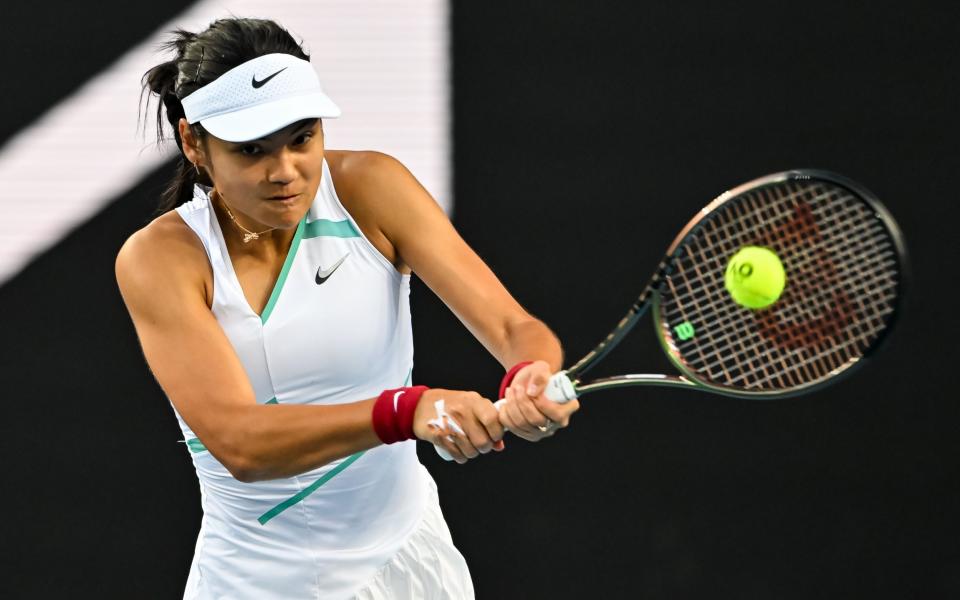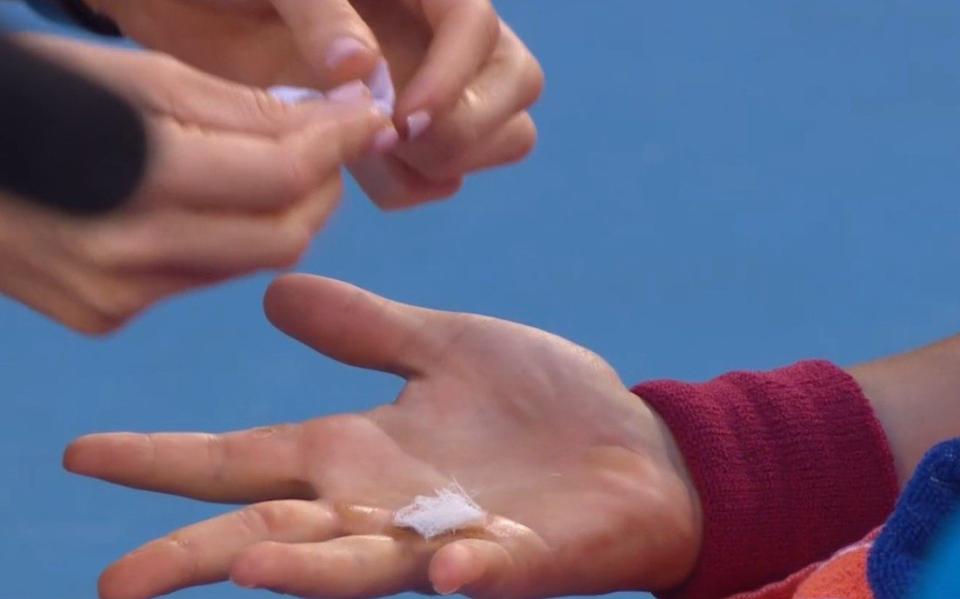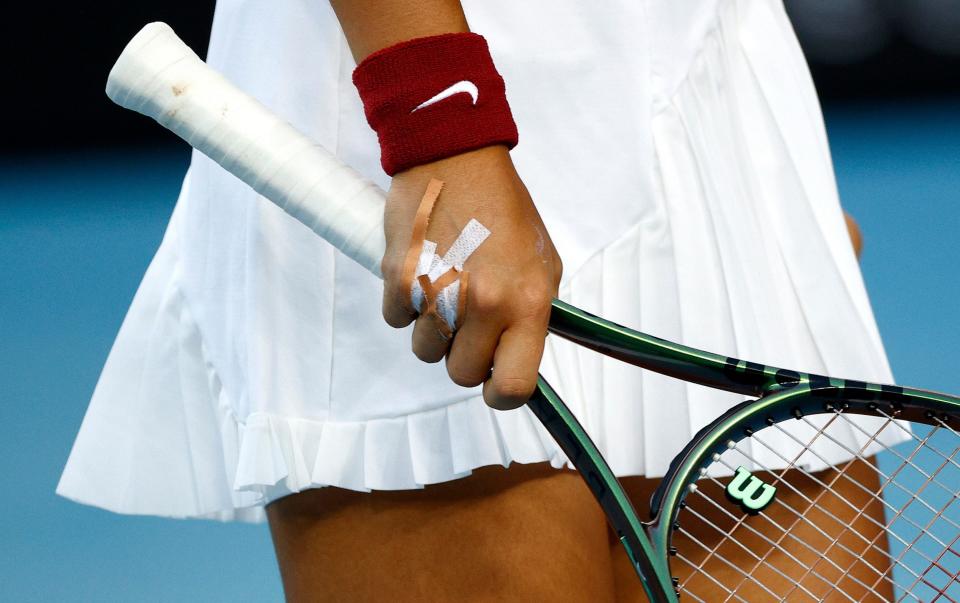Emma Raducanu has sprinkled stardust on grand slams - now she must embrace the grind of the tour

Even with a deep crater in her racket hand, Emma Raducanu still managed to bring sparkle to Thursday’s night session in Melbourne. Facing Danka Kovinic on Margaret Court Arena, she turned what could so easily have been a flat occasion into a thrill ride for a delighted crowd.
This is Raducanu: cheeky, cheery, and apparently impervious to negativity. At several moments during this bizarre three-setter – which found her hitting slice forehands rather than her usual topspin drives – she turned to her team with a broad grin.
Remarkably, Raducanu pushed Kovinic close, despite a wound which was far more than just a small patch of damaged skin. The severity of her blister became evident when the physio prodded her right hand during a changeover. Raducanu, who had been swigging from her water bottle, suddenly jack-knifed forward in extreme pain.
Even more remarkably, Raducanu could well have won if Kovinic – the world No 98 from Montenegro – had not fluked a net-cord winner when game-point down in the deciding set. But it was probably a mercy that she didn’t. As she admitted after the match, “I don't think you're getting very far against Simona [Halep, the former world No 1 who would have been her next opponent] with a slice forehand.”
With its sugar rushes and sudden twists, this balmy night on Margaret Court Arena could have been a microcosm of Raducanu’s short career. So much has happened to her, it is easy to forget that this was only her third major.
She has now played 13 matches at this level and won 11 of them. The two exceptions both came in eccentric style: first the retirement with breathing difficulties at Wimbledon, and now blistergate here.
So what next? In the interview room, Raducanu sounded unsure where her next event would be. The priority, she said, was to put in a February training block and thus make up for all the work she missed in December after contracting Covid.
Her three week-lay-off was the reason why she arrived in Australia with such soft, vulnerable hands. When her calluses faded during that long lay-off, there wasn’t time to rebuild these humble yet essential defences. In the end, Raducanu might as well have been a batsman walking to the middle without pads.


When will she return to the match court? We have around three weeks until Dubai, which is a major stop on the tour, and then the players go to Indian Wells in early March.
It’s worth noting, though, that while Raducanu’s grand-slam win-loss record may stand at 11-2, her WTA statistics are still only 2-6. And here we come to the next challenge in her evolution.
It is four months until the French Open, and Raducanu is largely untested on clay in any case. So this next phase will be awkward, like going back to sit A-levels when you have already graduated from university.
With her ranking still climbing (she could potentially stand as high as No 13 in the world after the Australian Open), Raducanu will be seeded wherever she goes. She will be scheduled for night sessions, pictured on posters and wooed with appearance fees. The expectation will be there, even if the biggest prizes are not.
And yet, is Raducanu really feeling it, as a WTA player? After her early experiences – which included winning her first slam before she had even opened her WTA account – it is easy to see how she might under-rate the regular tour. Especially when a couple of the stops she made at the end of last year – Linz in Australia, Cluj-Napoca in Romania – were a long way from the buzz of London, Melbourne, Paris and New York.
Adaptation won’t happen overnight, but it needs to come eventually. While Raducanu might be box office at the big events, they cover only eight weeks a year if you beat everyone; even less if you don’t.
These are the places are where the everyday life of the professional tennis player unfolds. Yes, Raducanu has thrived amidst the glitz of the four majors. But the next phase could be trickier still. The way forward is to embrace the grind.

